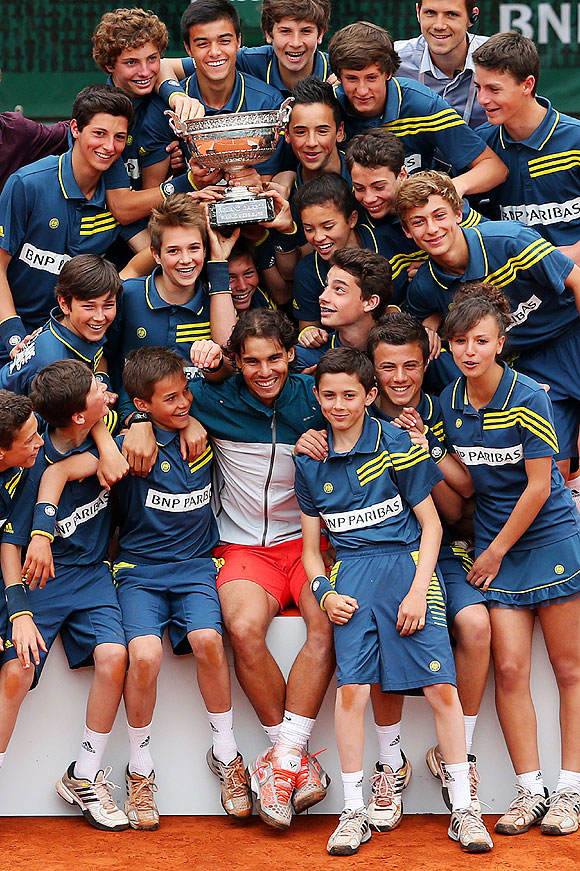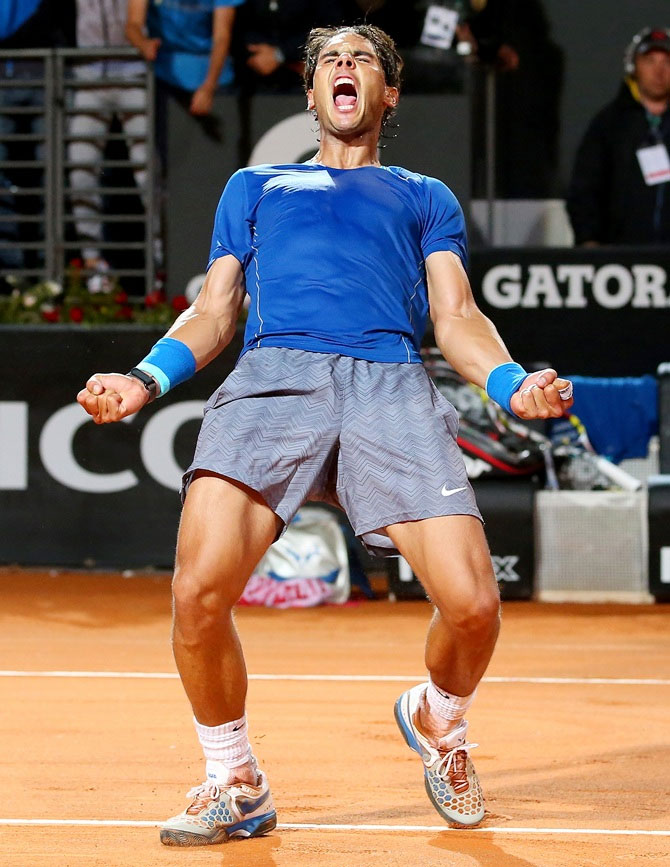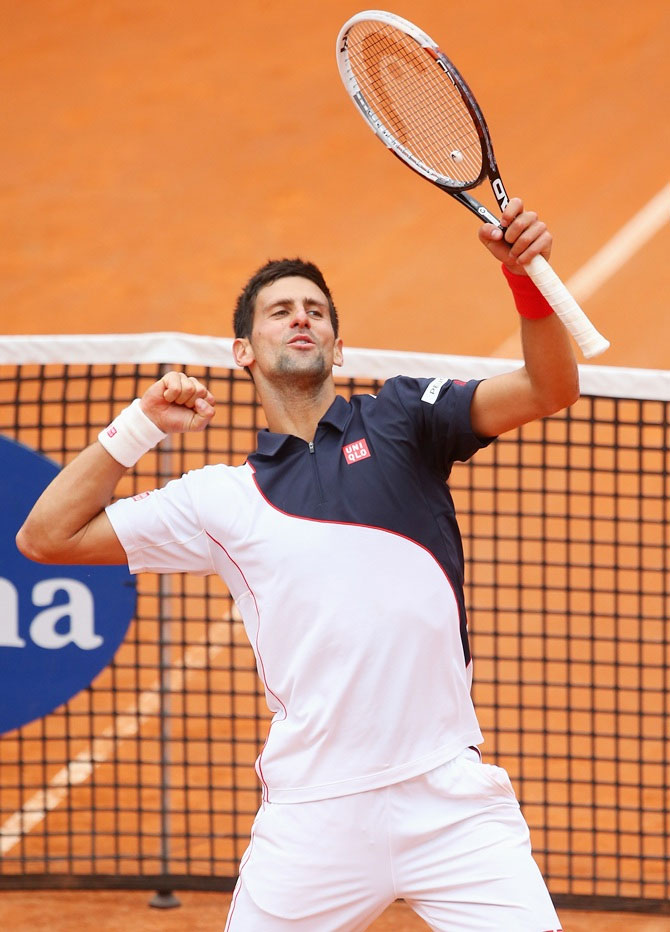Photographs: Julian Finney/Getty Images A Seshan
Novak Djokovic and Rafael Nadal look likely to contest the title at Roland Garros, says A Seshan.
The second Grand Slam event of the year commences at Roland Garros, Paris, on May 25. The French Open has some firsts to its credit -- the first Grand Slam to allow amateurs and professionals to compete in the Open era, the first to give equal prize money to men and women players and the only one to start matches on a Sunday.
The four Slams or Majors, as they are called, are played on different surfaces: synthetic (Australian), clay (French), grass (Wimbledon) and hard court (US Open).
The three characteristics that distinguish the surfaces are bounce, speed and footwork.
Clay is considered the slowest and grass the fastest; the other surfaces are intermediate.
Hard and grass courts are fast and favour aggressive players. Clay courts are slow and are the favourites of defensive players who operate mostly from the base line.
The surface at Roland Garros is really not clay but is crushed red brick atop limestone. Sliding to reach the ball is possible.
Steffi Graf among few to have won a calendar Grand Slam
Image: Steffi GrafPhotographs: Julian Finney/Getty Images A Seshan
One who wins the championship in all the four Majors in the same calendar year is called a calendar-year Grand Slam champion. There are also other categories of Grand Slam championships like non-calendar year Grand Slam and career Grand Slam. So far we have had only Don Budge (1938), Maureen Connolly (1953), Rod Laver (1962 and 1969), Margaret Smith Court (1970) and Steffi Graf (1988) as calendar-year Grand Slam champions.
The introduction of different surfaces over the years has made it ever more difficult to achieve the Grand Slam champion status in any category. However, the distinction between them is decreasing with the trend being towards slowing the game down to promote its entertainment value through the manipulation of the surface or the size of the ball.
There is far more interest in seeing long rallies that reflect the expertise and artistry of players than in a point earned after a few shots.
According to one study, the percentage of points gained by winning shots, as opposed to errors, at the French Open is 34 per cent -- marginally less than at the US Open and roughly a third more than at Wimbledon and Australian Open.
Still the fact remains that the technique of play varies from hard to slow courts.
Rome is a good predictor for Roland Garros winner
Image: Rafael NadalPhotographs: Julian Finney/Getty Images A Seshan
In the history of Grand Slam events only three players, outside the calendar-year Grand Slam champions, have won at the Australian and the French Opens in the same year. They are Ken Rosewall (1953), Roy Emerson (1963 and 1967) and Jim Courier (1992).
Who will win the crown this year?
Rome is a good predictor for Roland Garros, like the Queen’s Club, London, is for Wimbledon. The Rome Masters 1000 is played on a surface that is similar to the one at Roland Garros. In the last 14 years, since 2000, 10 champions at the Rome Masters have also won the French Open. Another two were runners-up in both. Thus, the odds favour Novak Djokovic to win at Paris after his victory at Rome over Rafael Nadal in the final last Sunday.
But I would not write Nadal off, having seen him play on television in the Masters series in Rome and other places.
Djokovic has benefited greatly from the training under Becker
Image: Novak DjokovicPhotographs: Julian Finney/Getty Images A Seshan
He seems to be back in full form after injuries and a lay-off from the circuit.
Djokovic and Nadal have met 41 times, with Nadal having a 22-19 advantage.
Nadal leads 2-1 on grass and 13-4 on clay. He won the French Open eight times between 2005 and 2013, the only break being in 2009 when Roger Federer won the championship.
Djokovic has benefited greatly from the training under Boris Becker. His service has more sting than before. He used to have the irritating habit of bouncing the ball too many times before serving for which he had been warned by umpires in the past as it caused delays. Now he is not taking so much time to serve. I would expect the final to be between Nadal, the defending champion, and Djokovic, and the probability of either one winning is equal.
Serena Williams, the defending women’s champion, continues to be in good form and she may follow up her Rome championship title with a win at the French Open.





Comment
article